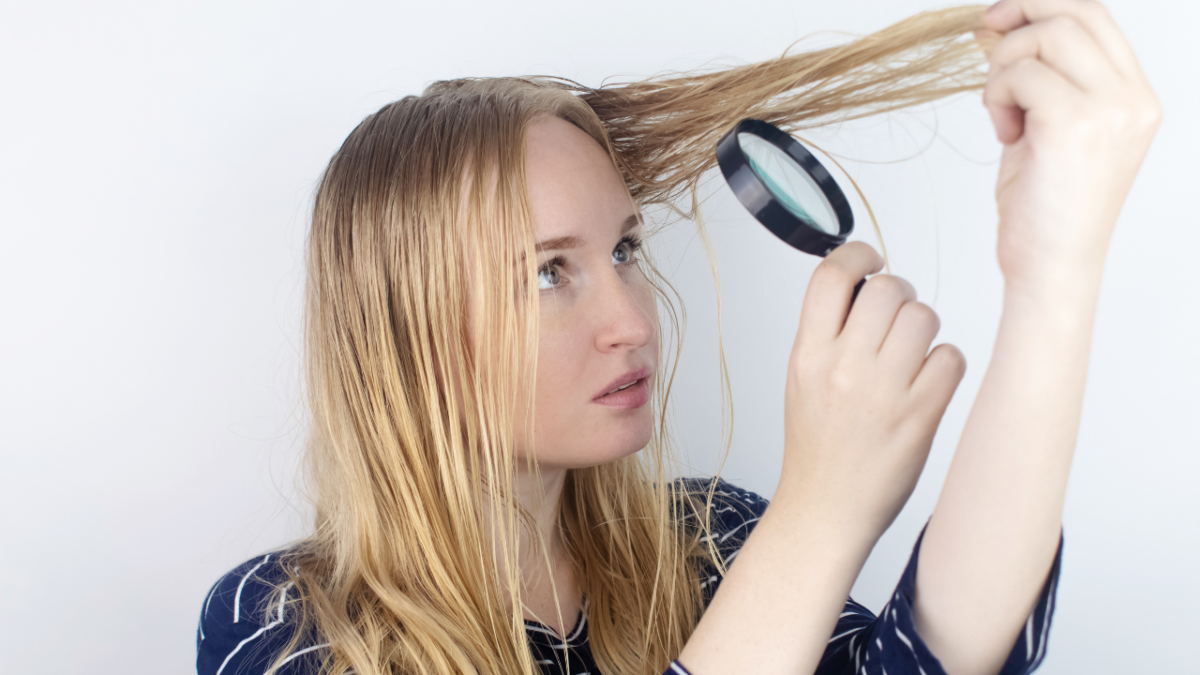Why Does My Hair Thin Out During Menopause?

Hair thinning is a common concern for many women especially during menopause. This change can be distressing, but understanding the underlying causes can help in managing and mitigating its effects.
Understanding The Normal Hair Cycle
Your scalp typically has around 100,000 hairs, each going through its own cycle:
- Anagen Phase (Growth): This phase lasts several years, during which the hair grows. Most of the hairs on your head are in this phase.
- Catagen Phase (Transition): A few weeks long, this is a brief phase where hair growth stops.
- Telogen Phase (Resting and Shedding): Lasting several months, this phase involves hair resting and eventually shedding, with up to 100 hairs falling out daily.
At any given time, different hairs are in different phases of this cycle.
How Perimenopause Affects Your Hair
During menopause, the body produces less estrogen, a hormone that supports hair growth. With lower estrogen levels, the growth phase of hair becomes shorter, leading to thinner hair. This thinning is usually noticeable around the front hairline, sides, and top of the head. Although more hair may shed, complete baldness is rare.
Additionally, estrogen affects sebum (scalp oil) production, so less estrogen can result in a drier scalp and hair.
Coping with Hair Changes
Here are some tips for managing menopausal hair changes:
Sulfate-Free Shampoos
Sulfate-free shampoos are less harsh on the hair and scalp. Sulfates, which are common in many shampoos, can strip away natural oils, leaving hair dry and brittle. By switching to sulfate-free options, you can help preserve your scalp’s natural moisture and reduce irritation.
You may also make your own shampoo at home using all-natural ingredient. Check the 5 Homemade Shampoo for Hair Regrowth: Recipes & Tips
Deep Conditioning
Deep conditioning treatments are designed to be more intensive than regular conditioners. They help to improve the texture and moisture of your hair by penetrating deeper into the hair shaft. Using a deep conditioner once a week can help combat the dryness and brittleness that often accompany menopausal hair changes.
Reduce Heat and Chemicals
Excessive heat from styling tools like blow dryers, straighteners, and curling irons can damage hair, making it more prone to breakage. Similarly, harsh chemical treatments such as perms, relaxers, and frequent hair dyeing can weaken hair structure. Limiting the use of these tools and opting for heat protectant sprays when you do style your hair can help maintain its health.
Air Dry
Allowing your hair to air dry instead of using a blow dryer can minimize heat damage. If you find that blow drying irritates your scalp, air drying can be a gentler alternative. For best results, gently pat your hair with a towel to remove excess water, then let it dry naturally.
Safe Hair Dye
If you choose to dye your hair, opt for products that are less likely to cause irritation. Look for dyes that are labeled as hypoallergenic or designed for sensitive scalps. If you have a history of skin irritation or allergies, it’s essential to do a patch test before using any new hair dye. Additionally, consider using semi-permanent dyes, which are less damaging than permanent dyes.
Additional Tips
- Scalp Care: Treat your scalp with as much care as your hair. Using gentle, moisturizing shampoos and avoiding products that cause dryness or irritation can help maintain a healthy scalp environment.
- Balanced Diet: A diet rich in essential vitamins and minerals supports overall hair health. Nutrients like biotin, vitamin D, zinc, and iron are particularly important for hair growth and strength. Including a variety of fruits, vegetables, lean proteins, and healthy fats in your diet can contribute to healthier hair.
- Regular Trims: Regular hair trims can help reduce split ends and breakage, keeping your hair looking healthier and fuller.
For those experiencing hair loss or thinning, over-the-counter minoxidil (2%) can help by extending the hair growth phase. Initial shedding may occur, but this is normal, and noticeable results typically appear after six months of consistent use.
For cosmetic cover-ups, options include camouflage powders and hair coverings like scarves and wigs.
Some women embrace the changes in their hair, taking inspiration from celebrities who sport diverse hairstyles. It’s important to note that “alopecia” is a general medical term for hair loss and doesn’t indicate a specific type.
Other Hair Loss Conditions
While hair thinning is common during menopause, certain patterns can signal other conditions:
- Telogen Effluvium: Increased overall shedding due to physical or emotional stress. Hair typically regrows over time.
- Androgenetic Alopecia: Female pattern hair loss, where the top of the scalp thins, and the part widens. The front hairline usually remains intact.
- Frontal Fibrosing Alopecia: The hairline recedes, exposing more forehead skin, sometimes affecting eyebrows.
- Central Centrifugal Cicatricial Alopecia: Thinning or lack of hair growth on the crown, often with itching or burning.
Each type of hair loss requires specific treatment, so it’s crucial to consult a healthcare provider for personalized advice.
Understanding these changes and knowing how to manage them can significantly enhance your quality of life during menopause. If you’re concerned about your hair, don’t hesitate to reach out to your doctor for guidance and support.
